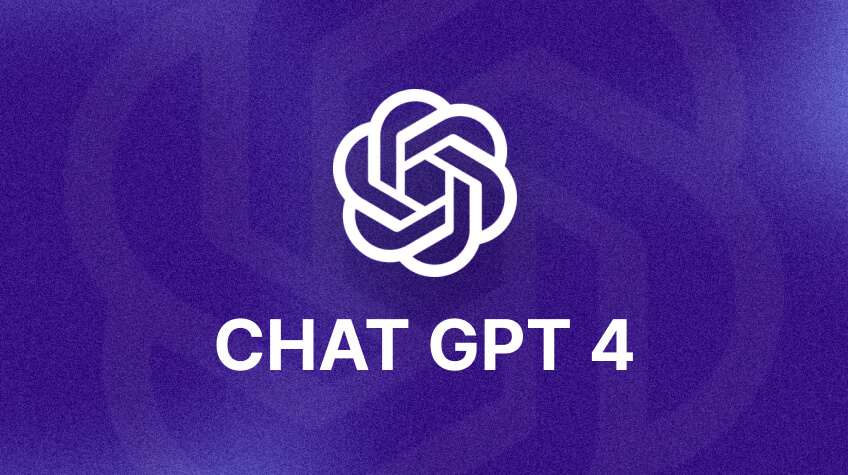GPT-4: In the ever-expanding landscape of artificial intelligence, OpenAI has once again pushed the boundaries with the introduction of GPT-4, the latest iteration of its groundbreaking Generative Pre-trained Transformer (GPT) series. Building upon the successes and lessons learned from its predecessors, GPT-4 represents a significant leap forward in natural language understanding and generation capabilities.
What is GPT?
Before delving into the specifics of GPT-4, it’s essential to understand the foundation upon which it is built. The GPT series is based on the Transformer architecture, a deep learning model designed primarily for natural language processing tasks. Transformers have gained widespread adoption in recent years due to their effectiveness in capturing long-range dependencies in sequential data, making them particularly well-suited for language-related tasks.
The key innovation introduced by GPT is pre-training on vast amounts of text data to learn a generalized representation of language. During pre-training, the model is exposed to a diverse range of textual inputs and learns to predict the next word in a sequence based on the preceding context. This process enables the model to develop a rich understanding of syntax, semantics, and context across various domains and languages.
What Sets GPT-4 Apart?
GPT-4 builds upon the foundation laid by its predecessors, incorporating several advancements and enhancements to further improve its performance and capabilities:
- Increased Model Size: One of the most notable improvements in GPT-4 is its increased model size, enabling it to capture even more intricate patterns and nuances in language. With a larger number of parameters, GPT-4 can better represent the complexities of human language, leading to more coherent and contextually relevant outputs.
- Enhanced Training Data: OpenAI continues to refine its methods for selecting and preprocessing the vast amounts of text data used to train GPT-4. By curating diverse and high-quality datasets from sources across the internet, GPT-4 benefits from a broader understanding of language and a more robust knowledge base.
- Improved Fine-Tuning Capabilities: While pre-training provides a solid foundation, fine-tuning allows GPT-4 to adapt to specific tasks or domains with greater efficiency. OpenAI has refined the fine-tuning process, enabling users to achieve superior performance on a wide range of downstream applications, including text generation, translation, summarization, and more.
- Better Handling of Context: GPT-4 demonstrates improved capabilities in understanding and leveraging context to generate more coherent and contextually appropriate responses. Through advancements in attention mechanisms and contextual modeling, GPT-4 excels in tasks requiring nuanced understanding of context, such as dialogue generation and question answering.
- Continued Focus on Ethical Considerations: As with previous iterations, OpenAI remains committed to addressing ethical considerations and potential biases in AI models. GPT-4 undergoes rigorous evaluation and testing to mitigate biases and promote responsible use in real-world applications.
Applications and Implications
The advancements introduced by GPT-4 have profound implications across a wide range of fields and industries:
- Natural Language Understanding: GPT-4’s enhanced capabilities in language understanding pave the way for more sophisticated chatbots, virtual assistants, and customer service applications capable of engaging in meaningful and contextually relevant conversations with users.
- Content Generation and Summarization: Content creators can leverage GPT-4 to automate the generation of articles, reports, summaries, and other textual content. GPT-4 excels in summarizing long texts, extracting key information, and generating coherent summaries tailored to specific requirements.
- Translation and Multilingual Communication: GPT-4’s improved language modeling abilities facilitate more accurate and nuanced translation between languages, enabling effective communication across linguistic barriers in diverse global contexts.
- Research and Education: GPT-4 serves as a powerful tool for researchers and educators, assisting in tasks such as literature review, data analysis, and curriculum development. Its ability to understand and generate text in multiple domains enhances productivity and enables new avenues of exploration.
- Creative Expression and Innovation: Artists, writers, and creative professionals can harness GPT-4’s generative capabilities to inspire new ideas, explore creative concepts, and even collaborate with AI in the creation of art, literature, music, and other forms of expression.
Looking Ahead
As the field of artificial intelligence continues to evolve, advancements like GPT-4 represent significant milestones in the quest for machines that can understand and generate human-like language. While GPT-4 marks a remarkable achievement, it also serves as a reminder of the ongoing pursuit of innovation and improvement in AI research.
With each iteration, AI language models like GPT-4 bring us closer to the realization of intelligent systems capable of understanding and interacting with us in increasingly natural and human-like ways. As we continue to unlock the potential of AI, it is essential to approach its development and deployment with a thoughtful and responsible mindset, ensuring that these powerful technologies are used to benefit society while mitigating potential risks and challenges.
